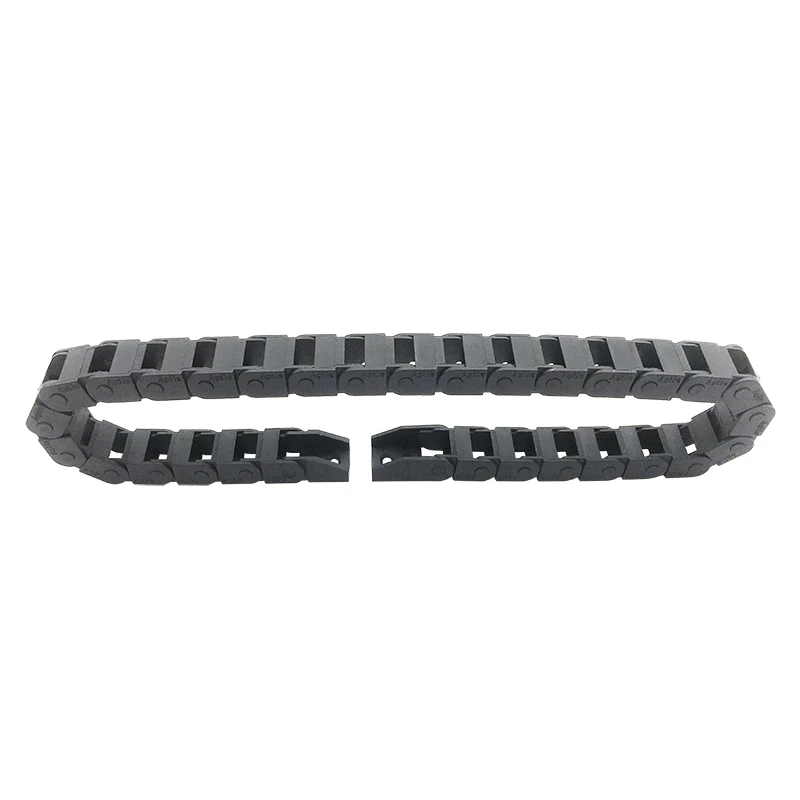Reinforced Drag Chains for Enhanced Durability and Performance in Challenging Environments
The Importance of Reinforced Drag Chains in Modern Engineering
In the realm of modern engineering, the integration of technology has continually evolved to meet the diverse demands of industrial applications. Among these advancements, reinforced drag chains have emerged as a critical component, providing essential support for various machinery and systems. This article explores the significance of reinforced drag chains, their functionality, and their applications in different sectors.
What are Reinforced Drag Chains?
Reinforced drag chains, also known as energy chains or cable carriers, are systems designed to guide and protect moving cables and hoses in machinery. These chains are typically made from durable materials such as plastic or metal, and they are engineered to accommodate multiple cables or hoses within a single unit. The reinforcement aspect refers to the added strength and durability that these chains possess, allowing them to withstand harsh environments, heavy loads, and repetitive movements.
Key Features and Benefits
1. Enhanced Durability The primary advantage of using reinforced drag chains is their robust construction. Unlike standard drag chains, reinforced versions are designed to resist wear and tear, making them suitable for high-performance environments. Their enhanced durability extends the lifespan of the interconnected cables and hoses, reducing maintenance costs and downtime.
2. Organized Cable Management In industrial settings, a vast array of cables and hoses can become tangled and disorganized. Reinforced drag chains offer an effective solution for cable management, keeping cables neatly arranged and preventing damage caused by friction or excessive bending. This organization not only improves safety but also facilitates easier maintenance and troubleshooting.
reinforced drag chain

3. Versatile Applications Reinforced drag chains are utilized across various industries, including manufacturing, automation, robotics, and aerospace. In manufacturing environments, they are commonly found in CNC machines, conveyor systems, and robotic arms, where mobility and flexibility are essential. The aerospace industry employs them in aircraft systems and equipment, ensuring that critical cables and hoses function seamlessly during flight operations.
4. Resistance to Environmental Factors Many reinforced drag chains are designed to withstand extreme temperatures, chemicals, and other environmental stresses. This makes them suitable for use in diverse settings, from automotive manufacturing plants to outdoor construction sites. Their resistance to environmental factors ensures that operational efficiency is maintained, regardless of the surrounding conditions.
5. Noise Reduction Another notable benefit of reinforced drag chains is their potential for noise reduction. Traditional cable arrangements can produce significant noise when in motion, which can contribute to a disruptive work environment. The design of reinforced drag chains minimizes this noise, creating a quieter, more focused workspace, which is particularly important in settings like laboratories or clean rooms.
Conclusion
The incorporation of reinforced drag chains in modern engineering is a testament to the advancements in technology and the increasing need for efficiency and reliability across various industries. Their durability, flexibility, and effective cable management capabilities address many of the challenges faced in industrial applications. As machinery becomes more sophisticated and demands grow, the role of these systems will continue to expand, providing unparalleled support for the intricate systems that power our world.
By investing in reinforced drag chains, companies can enhance their operational efficiency, ensure the safety of their personnel, and minimize downtime related to maintenance. As we look to the future of engineering, reinforced drag chains remain a vital component that will undoubtedly play a significant role in driving innovation and functionality across a multitude of sectors.








